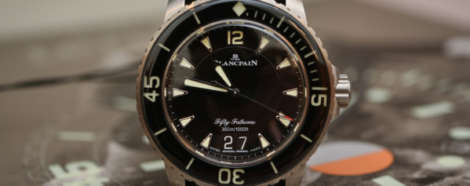Hands-on – Grand Seiko Hi-Beat 36000 Calibre 9S 20th-Anniversary SBGH267
Grand Seiko’s history dates back to 1960 when Japanese brand Seiko decided to up the game and introduced a gold chronometer watch – a watch that has been reissued in 2017. Another important date in the brand’s history is 1998. That year, Grand Seiko introduced Calibre 9S, an entirely new movement designed to become the base for most mechanical watches we know today. 20 years later, it is time to celebrate, which has been done with a trilogy of commemorative watches, including the desirable and perfectly executed Grand Seiko Hi-Beat 36000 Calibre 9S 20th-Anniversary SBGH267 we’re about to look at.
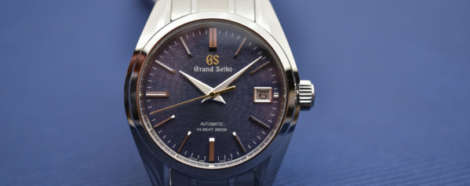
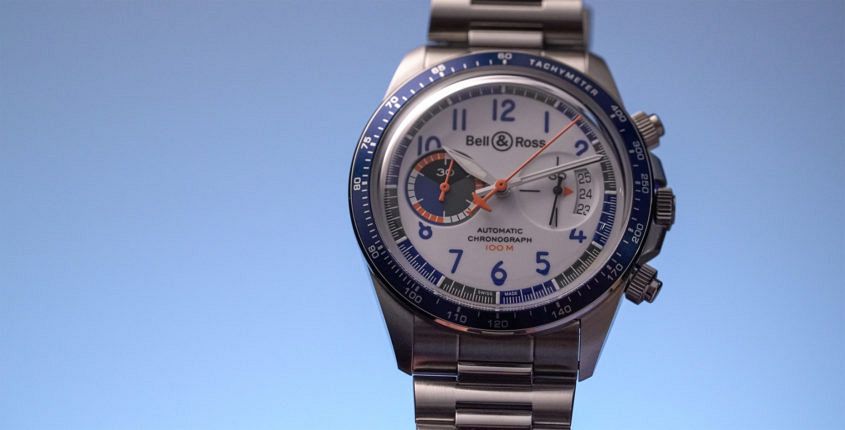 Every year, the Bell & Ross design team goes nuts with an incredible and (sadly) hypothetical vehicular creation. This year it was the Racing Bird, an awesomely streamlined take on a prop-powered racer, the sort of machine you’d see at the Reno Air Races. Of course, while the plane is conceptual, the watches are very, very real. Built off the base chassis of the vintage chronograph, the BRV2-94 Chronograph is at once modern and gloriously old-school. The case is near perfectly proportioned, 41mm across, though the crown guard and screw-down chrono pushers add a little breadth. It doesn’t sit too high on the wrist either, despite the sweet domed sapphire. This sizing, combined with the classic style and solid bracelet, give the watch a timeless yet purposeful character. While the appeal of the watch’s design might be eternal, the details are very much of an era — the ’70s. This time is recognised as a golden age of sports watches, with watchmaking innovations like the automatic chronograph, as well as the popularity of sports that required them. It’s also a time unafraid of bold colour. It’s the punchy personality that the Racing Bird plays with, taking a lustrous off-white base…
Every year, the Bell & Ross design team goes nuts with an incredible and (sadly) hypothetical vehicular creation. This year it was the Racing Bird, an awesomely streamlined take on a prop-powered racer, the sort of machine you’d see at the Reno Air Races. Of course, while the plane is conceptual, the watches are very, very real. Built off the base chassis of the vintage chronograph, the BRV2-94 Chronograph is at once modern and gloriously old-school. The case is near perfectly proportioned, 41mm across, though the crown guard and screw-down chrono pushers add a little breadth. It doesn’t sit too high on the wrist either, despite the sweet domed sapphire. This sizing, combined with the classic style and solid bracelet, give the watch a timeless yet purposeful character. While the appeal of the watch’s design might be eternal, the details are very much of an era — the ’70s. This time is recognised as a golden age of sports watches, with watchmaking innovations like the automatic chronograph, as well as the popularity of sports that required them. It’s also a time unafraid of bold colour. It’s the punchy personality that the Racing Bird plays with, taking a lustrous off-white base…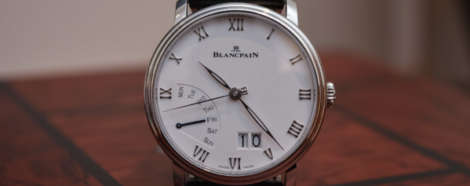

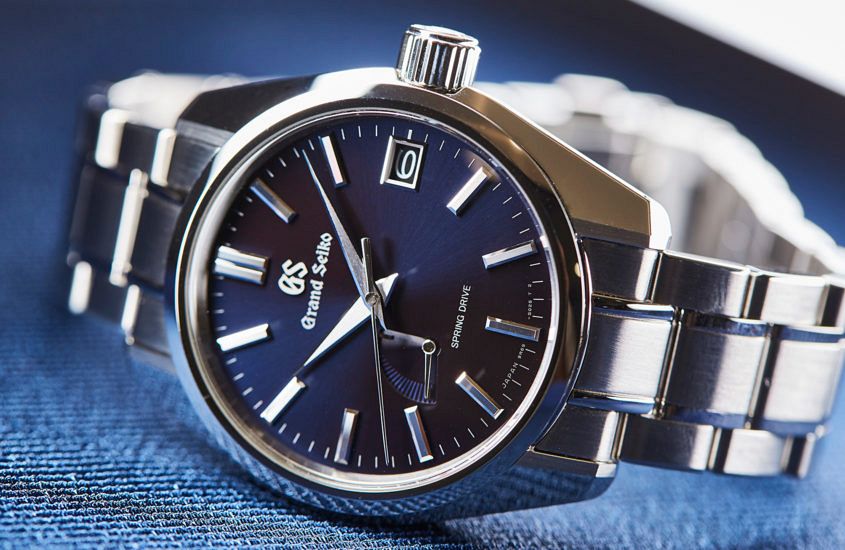 I’m on the record as being a big fan of Grand Seiko, largely because their approach to watchmaking (the focus on accuracy, timeless design and wearer comfort) really resonates with me. However, I’m more than willing to admit that I buck the trend a little in my preference for the brand’s plainer, less jazzy dials. While I can admire and see the beauty in the iridescent green of the peacock, or the intricacy of the SBGR311 or SBGH267, my personal taste is a little more understated; I can’t see myself wearing those fancy fellas all day, everyday. Now, the SBGA375 — that’s a different story. This watch is made for everyday wear. A 40mm steel case, angular and bold (inspired by the 44GS), sets the tone. With its mix of surfaces it’s not too tooly or dressy (though I would stress about how quickly I’d scratch those broad, polished lugs and bezel). It’s a versatile vibe that continues to the three-link bracelet, with its slightly flashy polished centre-link edges. Though the lack of modern micro-adjustment on the bracelet might put some people off (but the drilled lugs are a winner in my book). The crown is screw down, and it…
I’m on the record as being a big fan of Grand Seiko, largely because their approach to watchmaking (the focus on accuracy, timeless design and wearer comfort) really resonates with me. However, I’m more than willing to admit that I buck the trend a little in my preference for the brand’s plainer, less jazzy dials. While I can admire and see the beauty in the iridescent green of the peacock, or the intricacy of the SBGR311 or SBGH267, my personal taste is a little more understated; I can’t see myself wearing those fancy fellas all day, everyday. Now, the SBGA375 — that’s a different story. This watch is made for everyday wear. A 40mm steel case, angular and bold (inspired by the 44GS), sets the tone. With its mix of surfaces it’s not too tooly or dressy (though I would stress about how quickly I’d scratch those broad, polished lugs and bezel). It’s a versatile vibe that continues to the three-link bracelet, with its slightly flashy polished centre-link edges. Though the lack of modern micro-adjustment on the bracelet might put some people off (but the drilled lugs are a winner in my book). The crown is screw down, and it…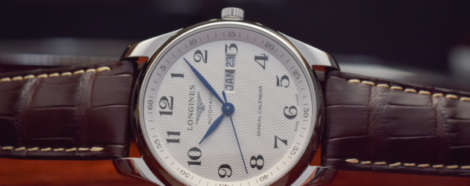
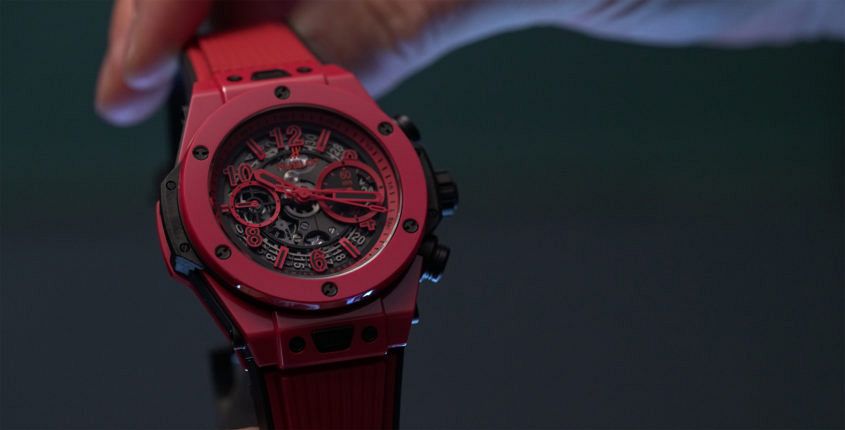 Perhaps it’s just the football, but we’ve got Hublot on the brain at the moment. And while the Referee watch, with its smart interface and snazzy, over the sweatband look — as rocked by FIFA’s refs — is a winner, it’s not the only one in their arsenal. There’s Big Red, which is what I’ve nicknamed the franky epic red ceramic Big Bang, a watch you need to see to really appreciate. But even if you don’t, take it from us that the shade of red is awesome, and awesomely hard to develop. And then there’s a slightly smaller Bang — the 42mm take on the classic Big Bang. These two watches are pretty classic takes on the famous Hublot shape, but there’s also a Spirit of Big Bang that’s seemingly made entirely of sapphire and precious stones, and then there’s the wrist-sized artworks that are the latest Orlinski collabs. All told, Hublot’s 2018 collection is Hublot doing what Hublot does best: material innovation and unbeatable statements.
Perhaps it’s just the football, but we’ve got Hublot on the brain at the moment. And while the Referee watch, with its smart interface and snazzy, over the sweatband look — as rocked by FIFA’s refs — is a winner, it’s not the only one in their arsenal. There’s Big Red, which is what I’ve nicknamed the franky epic red ceramic Big Bang, a watch you need to see to really appreciate. But even if you don’t, take it from us that the shade of red is awesome, and awesomely hard to develop. And then there’s a slightly smaller Bang — the 42mm take on the classic Big Bang. These two watches are pretty classic takes on the famous Hublot shape, but there’s also a Spirit of Big Bang that’s seemingly made entirely of sapphire and precious stones, and then there’s the wrist-sized artworks that are the latest Orlinski collabs. All told, Hublot’s 2018 collection is Hublot doing what Hublot does best: material innovation and unbeatable statements.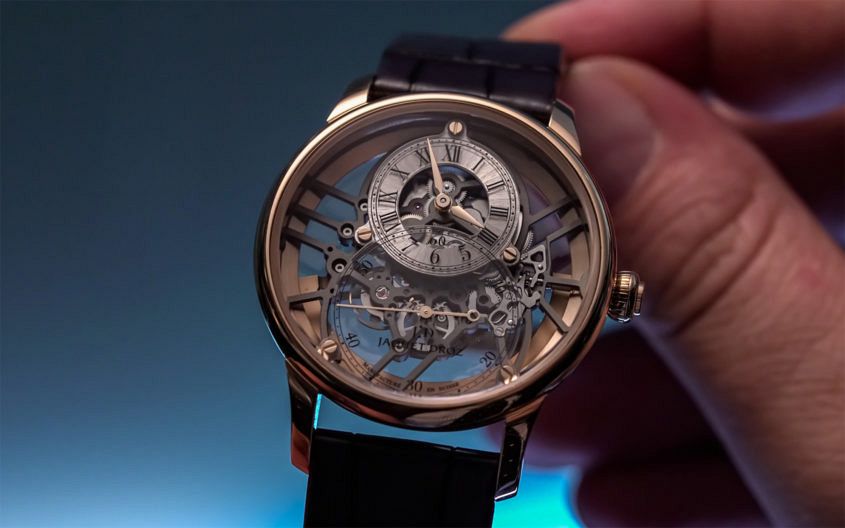 One of the things I love most in watches is when a brand challenges my preconceptions. That’s exactly what happened in Jaquet Droz’s Basel booth earlier this year. I was surrounded by writing machines, jewelled butterflies, automata of all shapes and sizes (well, not really, but you get my point), and then BAM! I saw the Skelet-One. I mean, sure, technically it’s part of the Grande Seconde family (just like the Tribute), but to my mind it’s aggressive modernity meets classical proportion and peerless finish. A seductive mix, indeed. In and of itself the skeletonisation is very cool, but the real deal-sealer is the sapphire subdial. Not only does it look like the titular seconds hand is floating on air, it allows maximum light into that golden case, to great effect. Minimal dial. Maximum impact. Jaquet Droz Grande Seconde Skelet-One Australian Pricing Jaquet Droz Grande Seconde Skelet-One, $44,950.
One of the things I love most in watches is when a brand challenges my preconceptions. That’s exactly what happened in Jaquet Droz’s Basel booth earlier this year. I was surrounded by writing machines, jewelled butterflies, automata of all shapes and sizes (well, not really, but you get my point), and then BAM! I saw the Skelet-One. I mean, sure, technically it’s part of the Grande Seconde family (just like the Tribute), but to my mind it’s aggressive modernity meets classical proportion and peerless finish. A seductive mix, indeed. In and of itself the skeletonisation is very cool, but the real deal-sealer is the sapphire subdial. Not only does it look like the titular seconds hand is floating on air, it allows maximum light into that golden case, to great effect. Minimal dial. Maximum impact. Jaquet Droz Grande Seconde Skelet-One Australian Pricing Jaquet Droz Grande Seconde Skelet-One, $44,950.